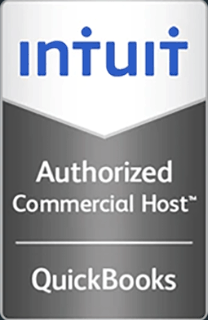Cloud Computing: Still The Best Value In It
By Adam Stern | Data Center Post
In the upper reaches of the IT realm—the corporate sector where requisitions for gear, software and services often exceed a year’s revenue for a typical small business—there’s a bit of a backlash brewing. The scuttlebutt is that expenditures for cloud computing services are beginning to break the bank. Perhaps underscoring that concern is a report from RightScale indicating that optimizing cloud costs is a top initiative across all cloud users, increasing to 58 percent from 53 percent in 2017.
Moreover, in the upper reaches, getting a straight answer on pricing is becoming a dodgy proposition. Consider this from provider CloudHealth Technologies: “Once upon a time, compiling a cloud computing cost comparison was difficult. Now it is practically impossible. Whereas previously, you could select instances with similar configurations from the three major cloud service providers and line them up against each other, now you have Reserved Instances (AWS), Reserved VM Instances (Azure) and Committed Use Discounts (Google) influencing the calculations. There are also other, cheaper cloud service providers gaining traction in the market.”
Indeed, for some, teasing out monthly fees does follow a rising curve. The very biggest public cloud providers charge based on usage—think cell phones, circa 1998—with no cap in sight. That quoted teaser rate? Well, that’s why they call it a teaser. And heavy users get nickel and dimed as well, with hikes and spikes as far as the company credit card will extend.
For the vast middle tier of cloud providers and cloud consumers, that’s not really the case. But even among the industry’s giants, it’s a mistake to fixate on increases in monthly fees. The biggest myth in the business is that cloud computing costs more than on-premises computing. It simply isn’t so (at any level), and there are compelling reasons why it really can’t be so—especially within the SMB sector. In a recent Microsoft survey, 82 percent of companies polled showed reduced costs as a result of deploying cloud technology.
In the cloud model, fees represent the primary pricing variable. Human capital and equipment acquisition (and software installs, etc.) are simply absent from the expense side, so any shifts in fees must be understood within that context. It’s largely the predictability of the fee stream that enables cloud providers to offer services while remaining profitable. This pay-for-usage approach works for provider and user alike; unless you increase memory or storage, for example, your monthly outlays are likely to be stable.
Keeping it simple also tends to keep it economical; adding complexity to the model complicates the pricing equation. In a recent Amdocs survey, 80 percent of SMBs indicated that they would prefer to get a single bill for all their communication consumptions (cloud and traditional).
That’s in part why the numbers have favored the cloud for some time, and numbers are just part of the equation. Because the cloud requires zero outlay for computer hardware and (typically) modest monthly fees for applications and maintenance – with such under-the-hood essentials as storage, backup, security, disaster recovery, round-the-clock support, and so on baked in—the economic argument is compelling; indeed, the cloud is a good value that keeps getting better. It’s entirely possible for a small or midsize business to spend $10K a month and tap enough compute power to drive a 1,000-user organization—certainly more than most actually need, but a comforting statement about economies of scale.
As good a deal as cloud users are getting, it’s probably true that since migrating from an on-premises model, many have put depreciation cycles in their rearview. But especially when the IT rollercoaster—the up-and-down tendency to acquire, deploy and depreciate, then rinse and repeat—is derailed, cloud computing can be seen for the true bargain it is.
About the Author:
Adam Stern , founder and CEO of Infinitely Virtual, is an entrepreneur who saw the value of virtualization and cloud computing a decade ago. Stern’s company helps businesses move from obsolete hardware investments to an IaaS [Infrastructure as a Service] cloud platform, providing them the flexibility and scalability to transition select data operations from in-house to the
cloud. Stern founded Infinitely Virtual in 2007, to provide virtual dedicated server solutions to growing enterprises, offering what was essentially a cloud computing platform before the term existed. Infinitely Virtual is a subsidiary of Santa Monica-based Altay Corporation, which Stern founded in 2003 to provide Windows, VMware and other service solutions to small and medium-size businesses.





